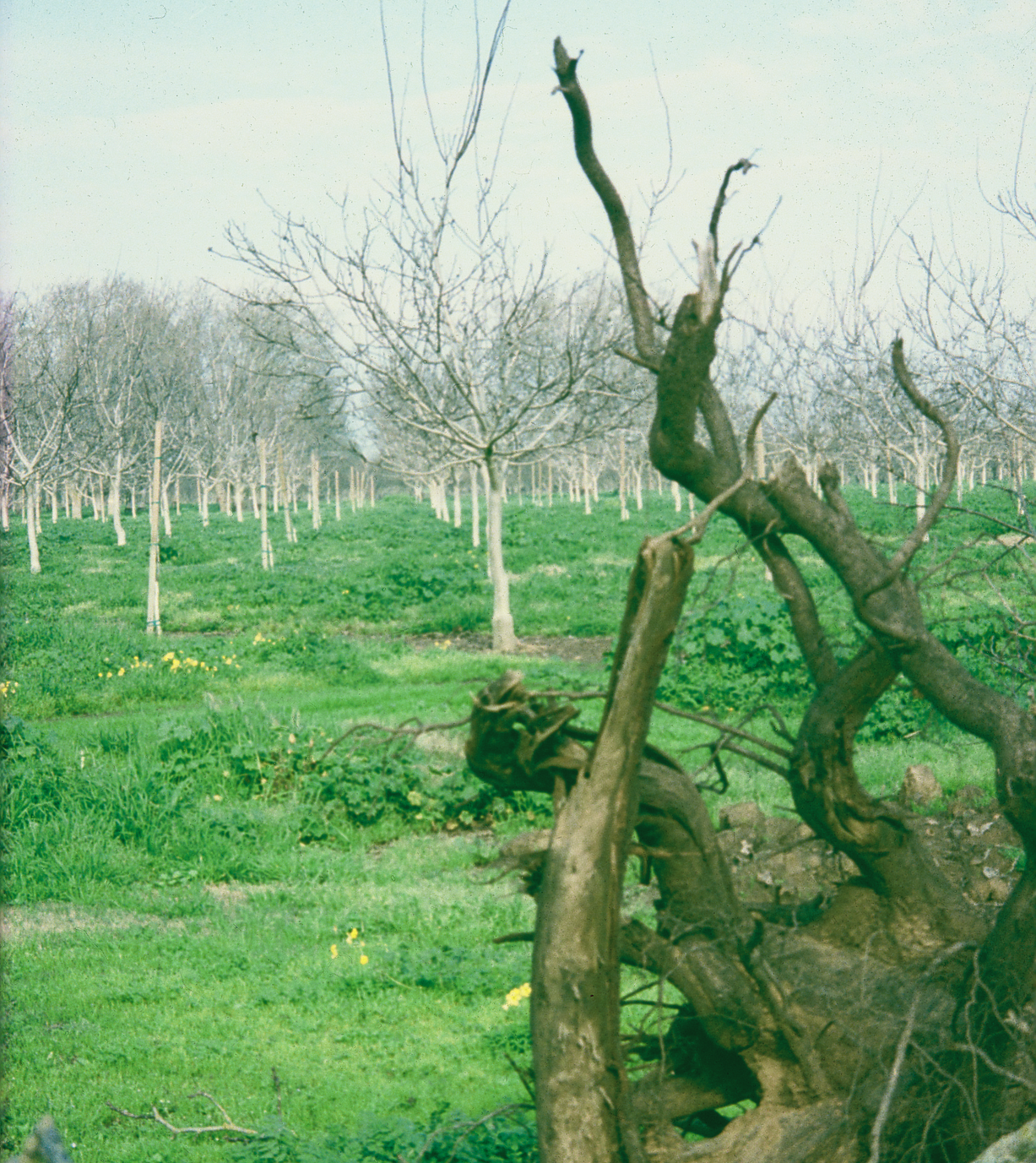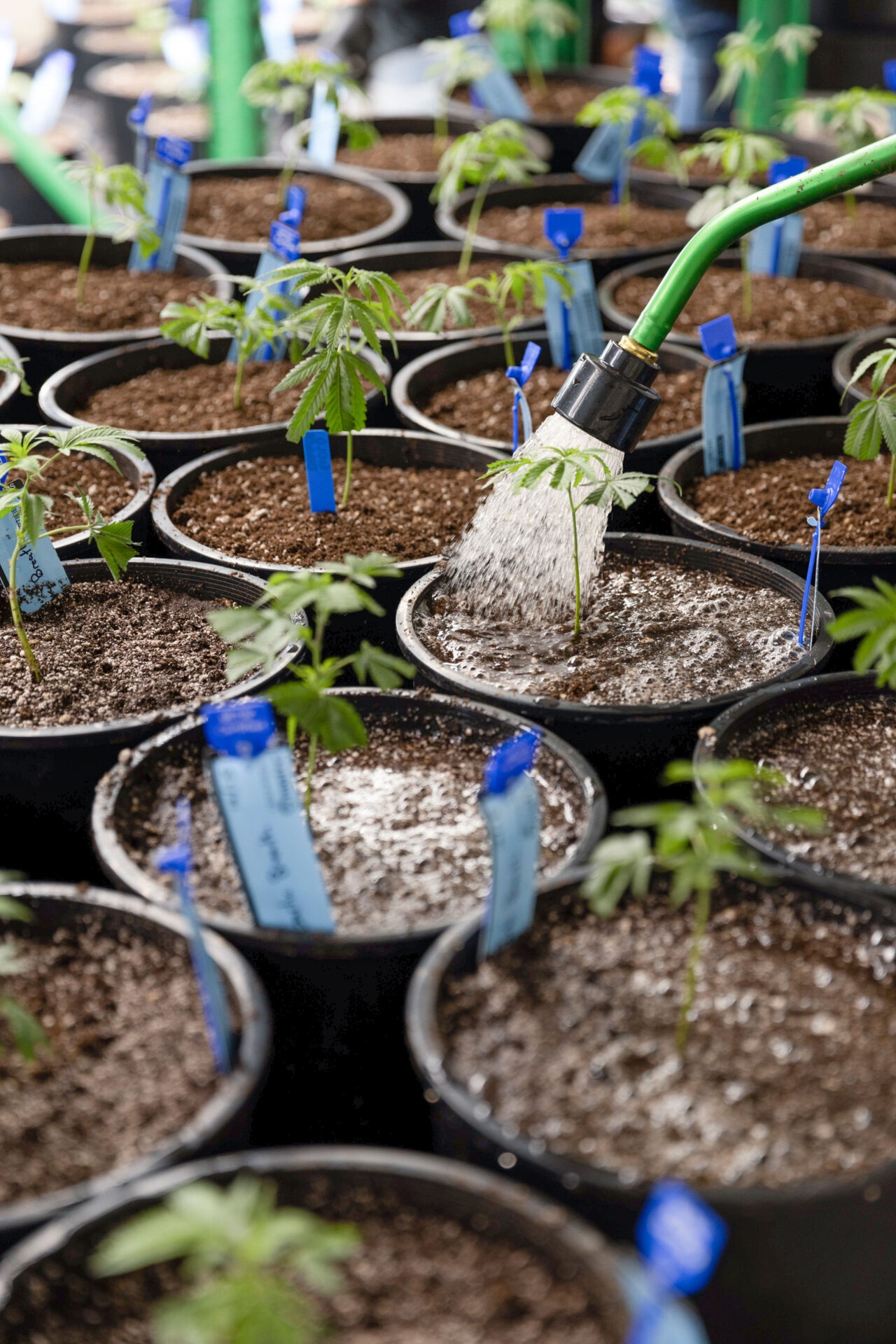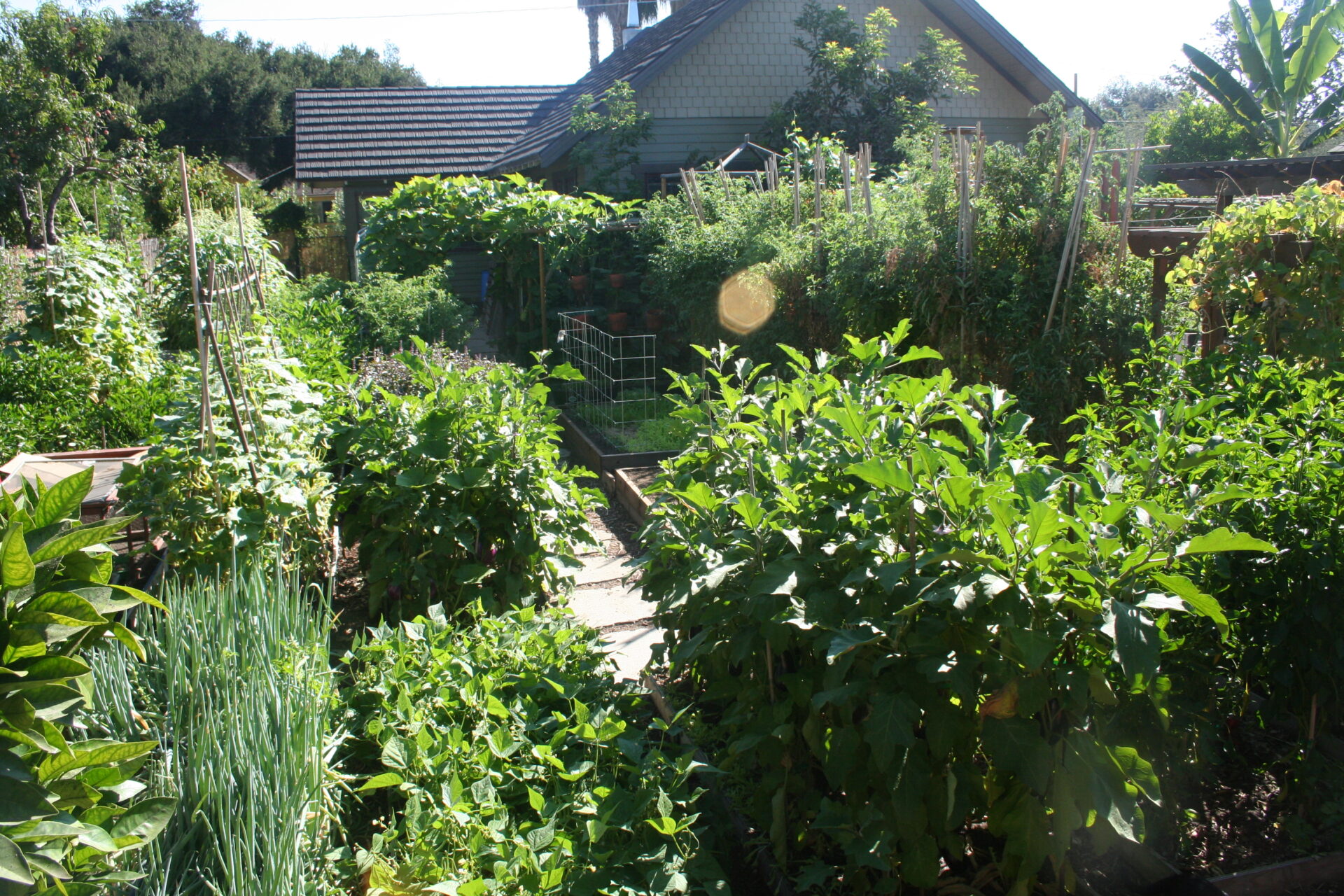This article is the second in a two part series on the micronutrient manganese. See the February/March issue of Organic Farmer magazine for additional information on manganese.
A close reading of the information provided in Part 1 of this article series and elsewhere should make it evident that testing for manganese levels can be measured and reported with great variance from lab to lab. Consequently, the required numbers can be very different on other tests than those that are being discussed here.
The guidelines used below for manganese needs and recommendations are based on tests for evaluating soils analyzed by using the originally established needs for the Albrecht system. Some may object and question why one would report numbers that are not of universal application. When numbers vary so greatly, nothing is meaningful unless it can be based on a foundation that is solid enough to report what field testing shows to be actually needed.
Manganese Deficiencies
What should growers look for to help identify when manganese is deficient (less than 40 ppm on the true Albrecht system tests) and limiting for the crop being grown on such soils? Numbers reported by other soil laboratories are not comparable according to those who have tried to do so. This is just to caution that pushing up the numbers on other soil tests to match what is shown as the measured need for crop examples used here may result in the overuse of manganese.
But when this specific test is performed, 40 ppm is the minimum recommended. Soybeans will begin to show mild symptoms of manganese deficiency in mature leaves later in the season at 37 to 38 ppm. Levels of 30 ppm or so begin to show results of shorter stalks of corn, though less yield and stalk size should be expected to result long before that. This makes manganese deficiency especially important for attaining the highest tonnages of corn silage.
Once other obvious deficiencies have been eliminated, wheat yields tend to respond well as manganese builds to the higher levels in any soil. For example, soils with similar fertility that have 40 ppm manganese will not produce the yield that those same soils provide at 80 ppm manganese. In fact, when manganese is truly the most limiting factor for high-yielding wheat soils, the yields will continue to increase on those soils until 200 to 250 ppm available manganese is reached when this specific type of testing is performed. Caution is extremely necessary here as almost any textbook will report that 200 ppm manganese is toxic to growing plants. Obviously, the tests being used are not the same as the one advocated here for determining manganese availability.
Tree crops, especially nut trees, respond very well to manganese with best results on soils where manganese is above 120 ppm. Walnuts are especially sensitive to manganese deficiency. Consequently, though normally not specifically recognized as the problem, soils that test below 40 ppm using this particular type of testing for manganese are generally classified as being unfit for walnut production.
The guidelines given here for manganese are specific to this type of testing, and using them is not advised for any other laboratory’s manganese test. But these numbers are being provided here to show there is a basic foundation to explain what can be expected when manganese is properly measured and applied for crop production.
Anything less than 40 ppm on the test we use means the full benefits from adequate manganese will not be realized for whatever crop. Although on soils with more than 5% organic matter, resulting deficiencies may not be as evident, and optimum results will still not be attained until any manganese deficiency is corrected.
In addition, keep in mind that a true manganese deficiency of below 40 ppm may be the case, and manganese still may not give the expected response when applied and even brought up to above the deficiency level. That is why so many “research” plots concerning manganese use fail to provide any benefits. If any of the primary or secondary elements are seriously deficient, correcting them will take precedence over the manganese level.
For example, a serious problem with newly planted almond trees is breakage during high winds. Some growers have corrected that problem by adding sufficient amounts of manganese. Many others try it without the same satisfactory results. That is because there are three elements involved here that provide for increased wood strength of which manganese is usually found to be correctly ranked as the second or third most important.
Adequate potassium is always of primary importance for wood strength. Manganese is second if it is below 40 ppm. Sufficient copper, which will be considered next in this series, is the other needed element and is necessary to help provide strength and resilience to the limbs.
Without an adequate uptake of manganese, weaker wood will always be the result. But soils can have good to excellent manganese levels and still the trees or other crops that grow there can be deficient in manganese. This becomes a serious problem when soils are too high in potassium (generally on lighter soils where too much compost has been applied) or too high in sodium (a problem for many soils, especially in the Western U.S.)
In fact, in any combination where potassium and sodium added together exceeds 10% of total soil saturation, manganese uptake begins to be blocked. The higher that percentage goes above 10%, the worse this problem becomes for the growth of any crop.
Note that the soil test may show to have plenty of manganese, but remember that, in this case, manganese is still there and in the correctly available form. That is because potassium and sodium do not tie up the manganese. Between the two when their levels of soil saturation is too high (10% on the Albrecht test), then, the uptake of sufficient manganese is blocked out. There is so much available potassium or sodium there that sufficient manganese just cannot get into the plants.
Having Sufficient Manganese
Why be concerned about having sufficient manganese in the soil? What are the benefits to farmers and growers when manganese-deficient soil is adequately corrected?
First, sufficient manganese (above 40 ppm) is necessary for quicker seed germination. Accordingly, enough manganese will cause the plants to grow off faster. Manganese is needed to determine the number of seed to be produced and to hold the blooms and seed or fruit in place. So, adequate manganese is needed from start to finish in terms of crop production.
What levels are needed? 40 ppm is the minimum. 80 ppm is considered as good. 125 ppm is considered the low side of excellent and 200 to 250 the high side, depending on crop sensitivity. In any case, it is best to build the level up in increments, even if the cost to do so is not considered as being a problem.
The guidelines for application rates on manganese is a maximum of 200 pounds of 28% manganese sulfate per acre even when severe deficiencies will not be corrected by that amount.
There is yet another problem that growers may have in trying to determine when there is sufficient manganese for the crop. This has to do with using a leaf analysis to determine if plants have sufficient or insufficient manganese.
One good example is when the Albrecht analysis shows manganese as even slightly deficient, common scab can be a problem for potatoes. Yet, in too many cases, the leaf analysis shows the level of manganese to be adequate, even when the soil test still shows manganese as deficient in the soil. Which should be believed? The fact that this problem is never solved until adequate manganese is present in those soils should help show which is correct!
Keep in mind that many potato growers use a metallic manganese based foliar to treat for disease. This can greatly skew the levels shown from the leaf test. But this is not the entire story. Potatoes have been used as an example here due to their extreme sensitivity to manganese deficiency. And at times, even those who have not used a foliar manganese can have leaf tests that show manganese as “too high” when, in actuality, the soils are still too deficient to correctly supply plant needs.
We find this consistently tends to be the case with leaf testing for most micronutrients, not just manganese, as compared to the levels shown to be required on the soil test to properly solve each deficiency. Such deviations can also be a serious problem when considering needs for other manganese-sensitive crops such as wheat, grapes and all types of trees, but especially English walnuts and black walnuts.
There is still another precaution that should be considered when using a leaf analysis for evaluating available levels of manganese for crop production. Even leaving dust on the leaves can cause manganese levels to appear to be too high in the plant. A good way to detect this is when iron and aluminum are also shown to be extremely high on the same analysis. When that happens, test again with clean plant tissue to be sure.
Another factor that is essential for manganese uptake is that a sufficient supply of calcium must be present in the soil. This is not determined by the fact that the soil has an adequate to high pH. There is only one way to tell when soils have at least the minimum level of available calcium to take up sufficient manganese for the crop: the soil needs calcium levels to be built up to and then maintained at between 60% to 70% base saturation before plants can most efficiently utilize available manganese from the soil. (CAUTION: Some labs may test as much as 4% lower while others show as much as 12% higher soil calcium saturation than the numbers determined by the Albrecht system testing procedures.)
Perhaps an additional word of caution should be given here, for even soils that may initially have an adequate amount of manganese can develop a deficiency problem if an excessive amount of unneeded lime is applied. An excess can cause manganese to go from adequate to deficient over the next one to three cropping seasons.
This can happen when any material containing a sufficient amount of calcium is applied on soils that barely have enough manganese (with even worse results when the soil is already deficient in manganese), because when calcium is applied, as it becomes available over the next one to three years, it will begin to tie up plant-available manganese in that soil. If the soil has enough manganese to stand the amount of calcium applied, manganese will not become a problem there as a result of applying needed lime.
This is one reason why in some areas potato growers can apply calcium limestone and have no problem with common scab, but in other areas no one will dare apply it. And due to soils needing calcium for adequate uptake of all the other nutrients (including N-P-K) if the problem is not solved, crop production will not only suffer but may even decline in terms of yield and certainly in terms of food quality.
Yet the issue of adequate manganese in the soil can be overcome by applying a sufficient amount of the correct type of manganese. That needed amount should be based on a detailed soil analysis which can accurately determine the desired level in the soil. The test should be such that it can accurately determine how much manganese is required to overcome any tie-up from added calcium as well. Whether already deficient, or for a potential decrease in manganese due to liming or other sources of calcium (such as poultry manure), only the use of true manganese sulfate should be considered for adding to the soil to sufficiently build up the manganese level to solve that need.
From the tests we use, the need for manganese will be reflected and solved based on the use of one pound of actual manganese for every pound shown to be lacking. If that does not happen in the next twelve months after an initial application, someone is likely providing the wrong advice or recommending the wrong product.
Some soils do not even build well using manganese sulfate. In a very few cases it has been necessary to apply the needed amount for two or three years in a row to reach the desired minimum level. Because of its physiological make-up, a crop which can also help to measurably increase manganese availability in the soil is rice.
Just keep in mind that the primary elements, N-P-K, truly are primary in terms of getting enough nutrients there to grow the crop. But when any one of these three are over-applied, providing more than the soil can tolerate, those same elements can cause a whole new set of problems, not just for the crops mentioned in this article but for all types of crops and growing plants.
For example, as discussed already in regard to manganese, potassium or sodium alone, or any combination of the two, totaling more than 10% will begin to block the uptake of manganese. Normally, available soil boron will begin to be tied up when potassium remains above 7.5% saturation in any soil during the growing season. Excessive phosphate reduces zinc availability and uptake in crops. And excessive nitrogen ties up available copper, which is the next micronutrient that will be considered in this series about the need for trace elements.






